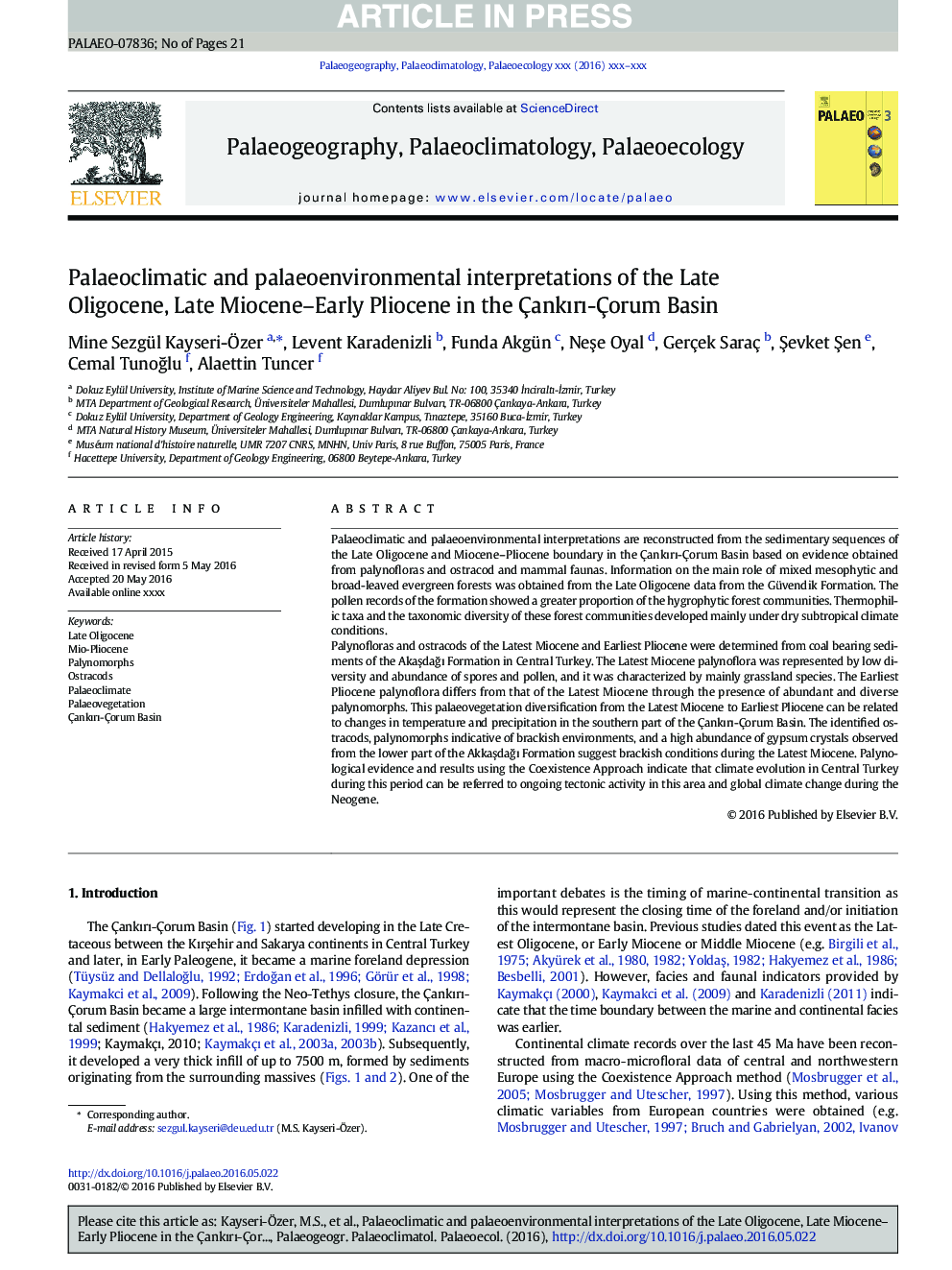| Article ID | Journal | Published Year | Pages | File Type |
|---|---|---|---|---|
| 5755974 | Palaeogeography, Palaeoclimatology, Palaeoecology | 2017 | 21 Pages |
Abstract
Palynofloras and ostracods of the Latest Miocene and Earliest Pliocene were determined from coal bearing sediments of the AkaÅdaÄı Formation in Central Turkey. The Latest Miocene palynoflora was represented by low diversity and abundance of spores and pollen, and it was characterized by mainly grassland species. The Earliest Pliocene palynoflora differs from that of the Latest Miocene through the presence of abundant and diverse palynomorphs. This palaeovegetation diversification from the Latest Miocene to Earliest Pliocene can be related to changes in temperature and precipitation in the southern part of the Ãankırı-Ãorum Basin. The identified ostracods, palynomorphs indicative of brackish environments, and a high abundance of gypsum crystals observed from the lower part of the AkkaÅdaÄı Formation suggest brackish conditions during the Latest Miocene. Palynological evidence and results using the Coexistence Approach indicate that climate evolution in Central Turkey during this period can be referred to ongoing tectonic activity in this area and global climate change during the Neogene.
Related Topics
Physical Sciences and Engineering
Earth and Planetary Sciences
Earth-Surface Processes
Authors
Mine Sezgül Kayseri-Ãzer, Levent Karadenizli, Funda Akgün, NeÅe Oyal, Gerçek Saraç, Åevket Åen, Cemal TunoÄlu, Alaettin Tuncer,
